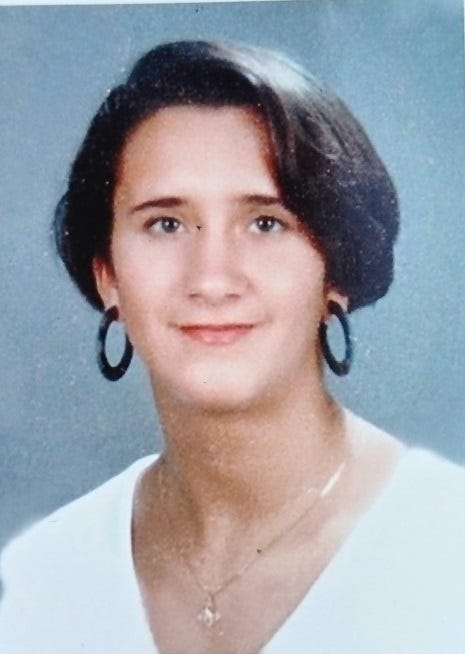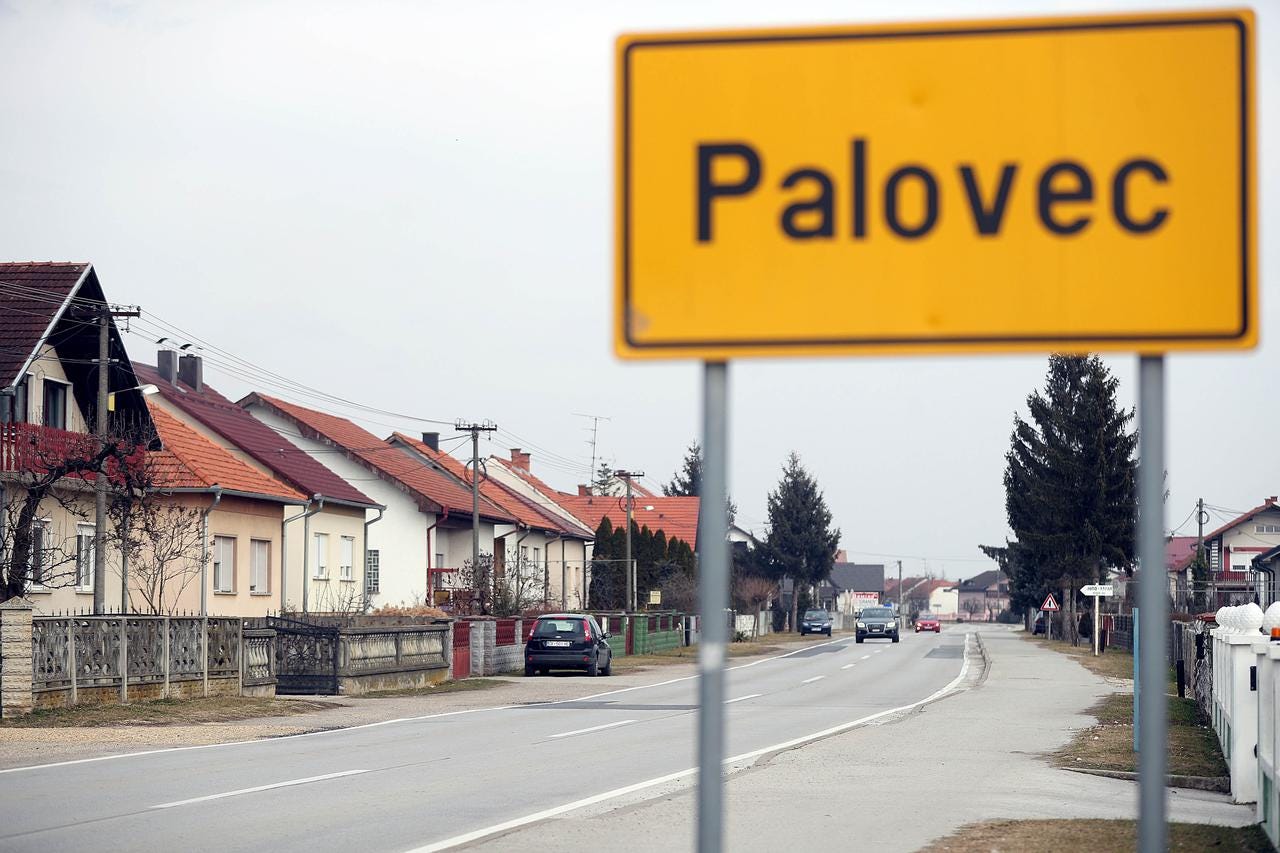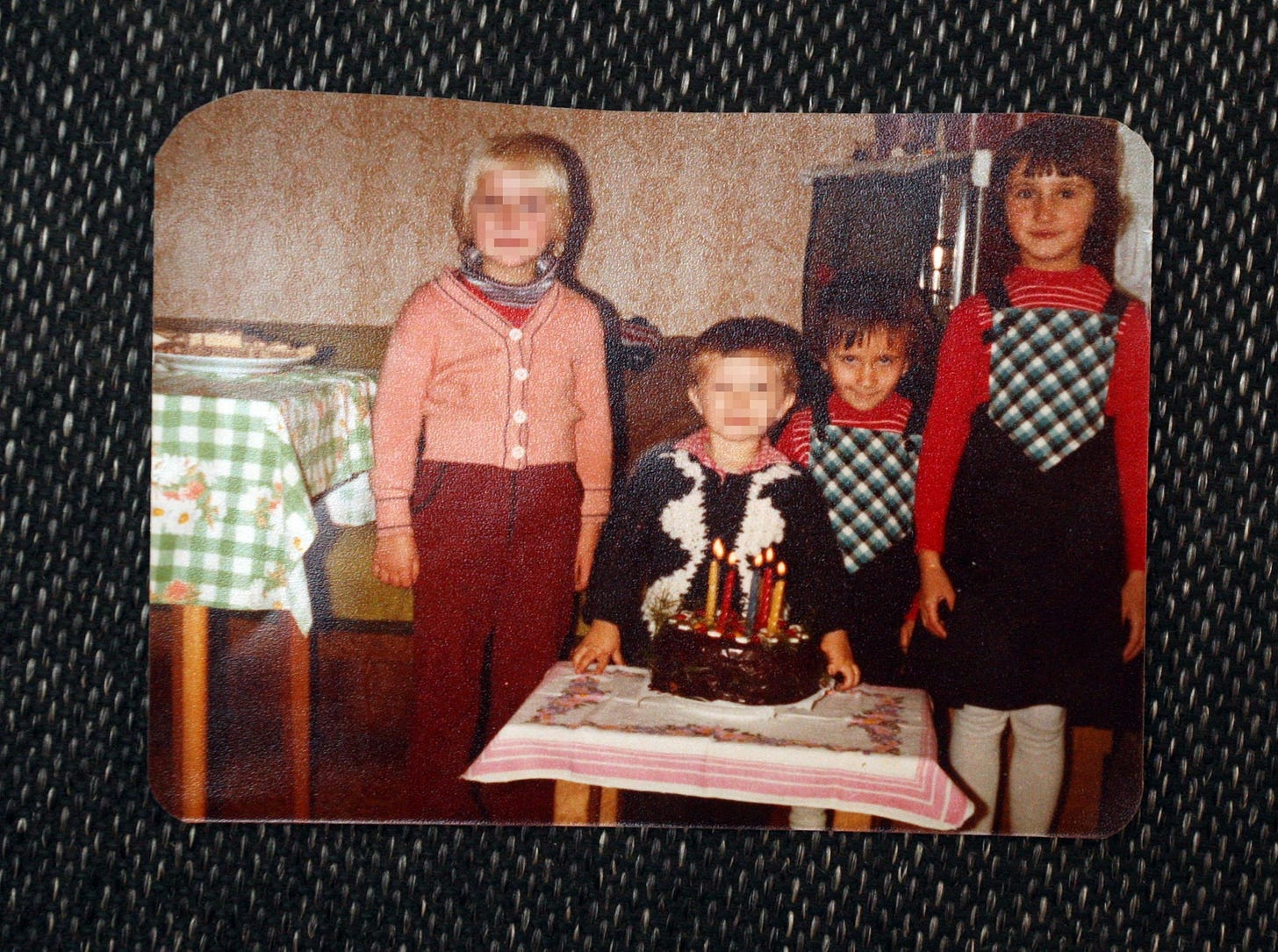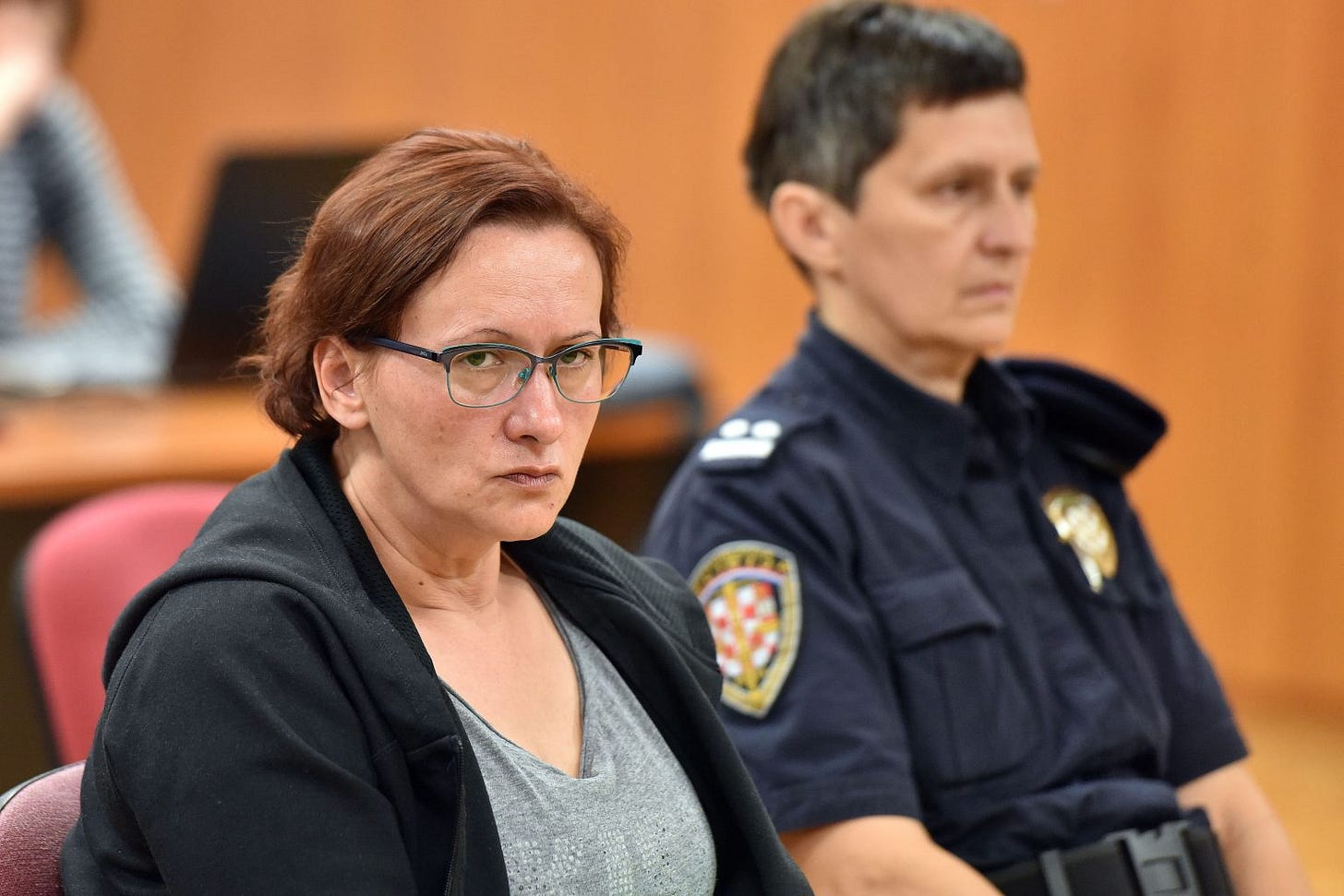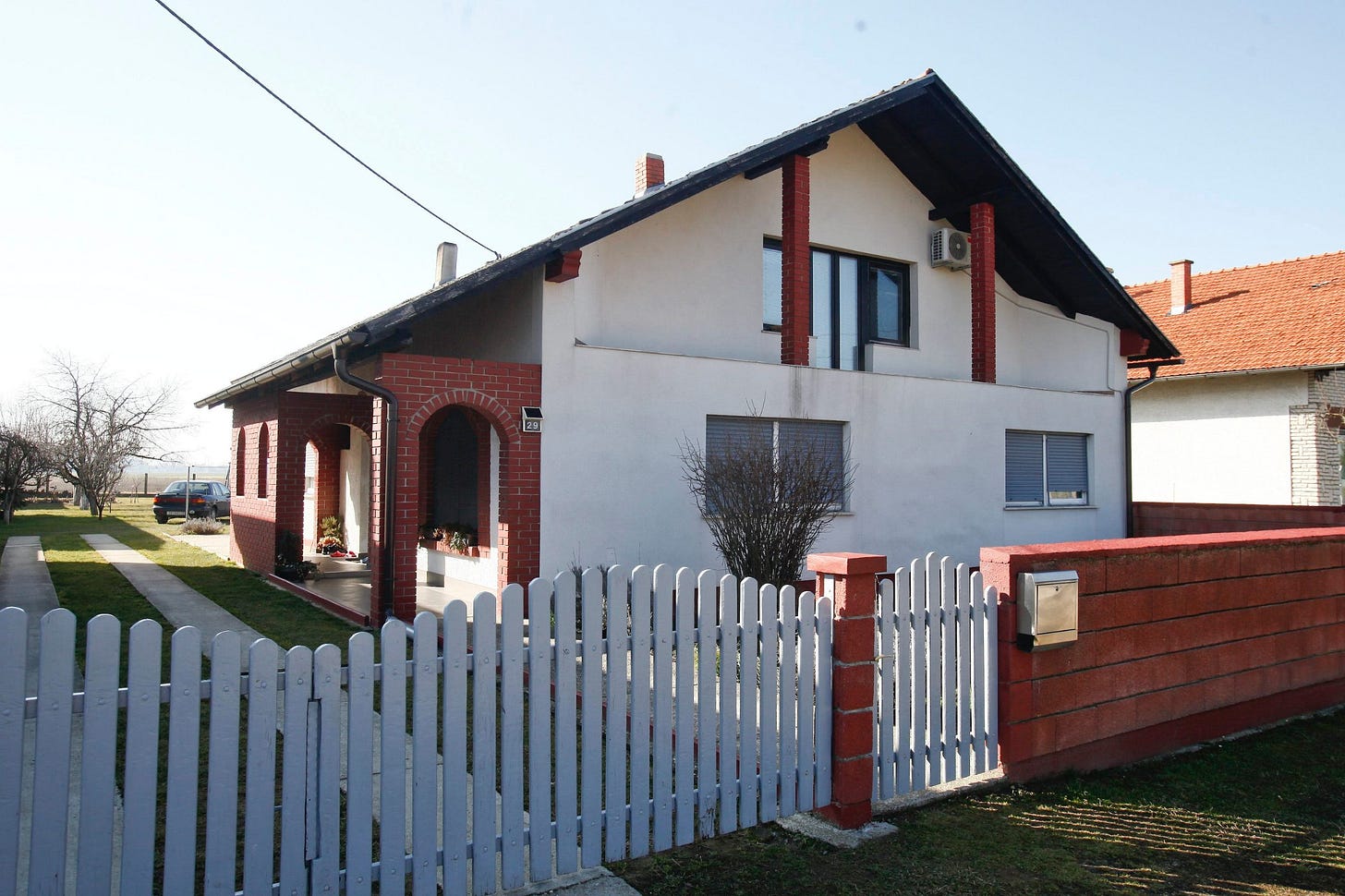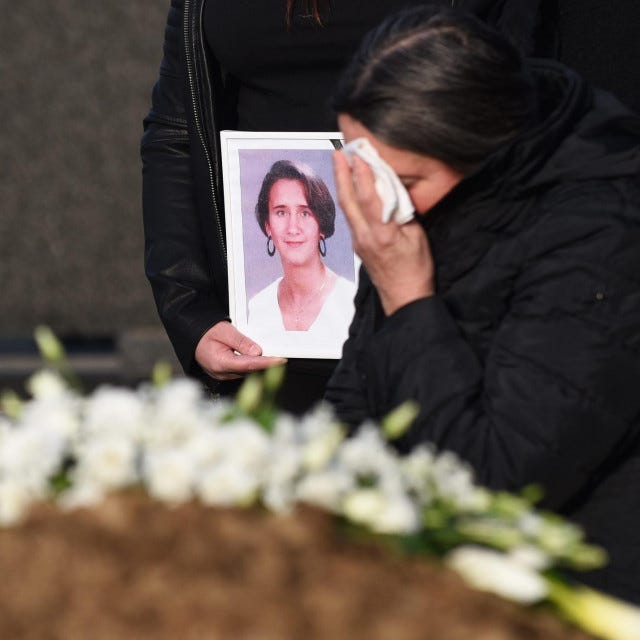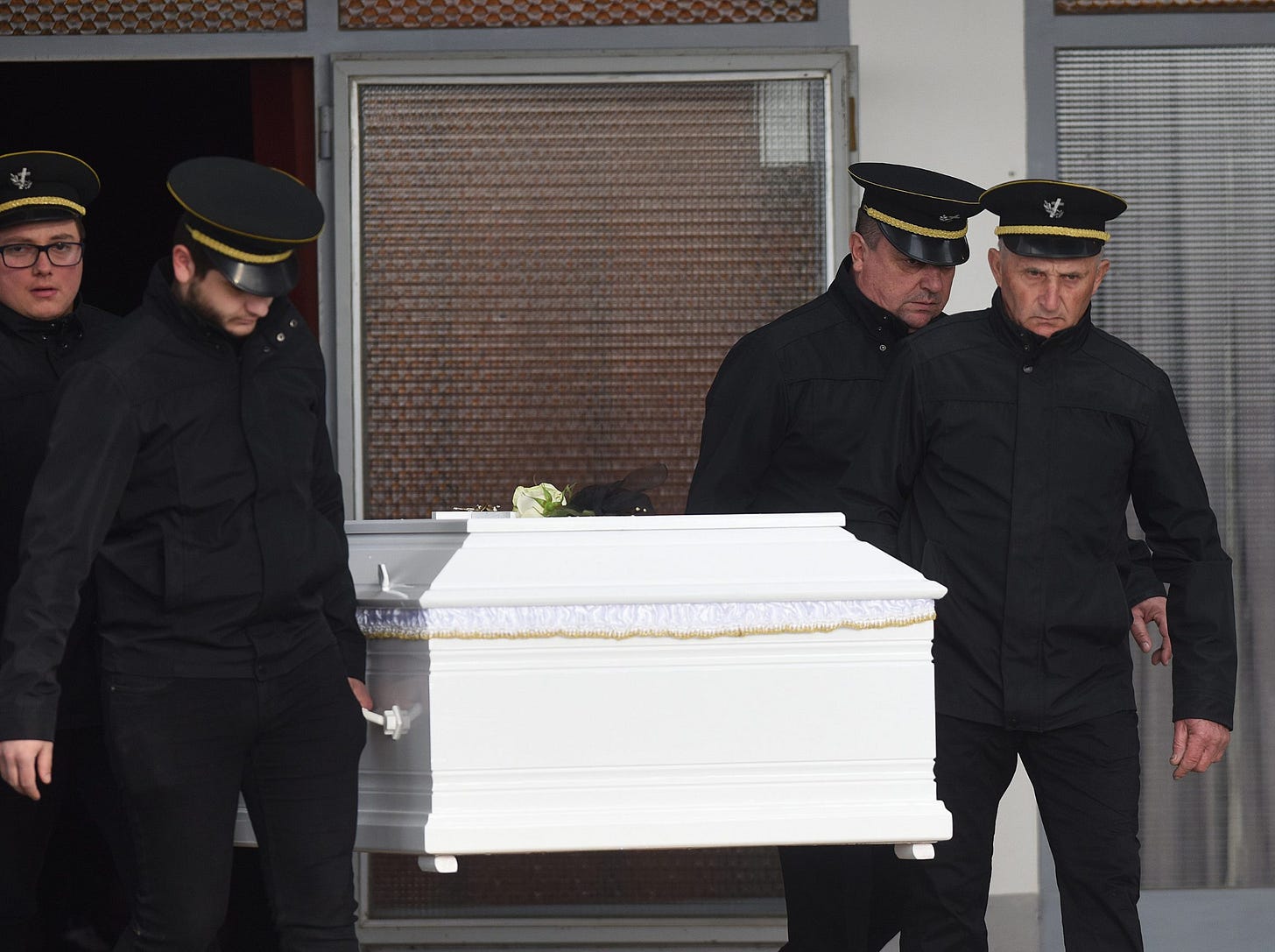There is something about life in small communities that seems to either be inherently attractive to people, or completely unimaginable. Life in a small town or a village where everyone sort of knows each other, where silence is the only thing to be found on the streets after the supper has been consumed, where doors are locked only because it’s something that should be done, and not out of fear - is not for everyone. And yet there are people who have lived for generations in towns or villages, finding comfort in the staleness of events, finding fun in gossip that often runs rampant, and building their family nests amongst neighbors they didn’t really know, but somehow knew everything about them.
Our today’s case comes from a place like that. And this one hits particularly close to home, because it happened just a 15 minute drive away from my hometown.
It is a case that has, quite frankly, left me speechless. A case that sent the gossip mill into overdrive, and at the same time proved how dangerous the gossip mill can be. It is a gruesome case, one where the facts creep you out the more you think about them.
And in the end, it is also a case where justice was served, and even though it had a devastating end, it did eventually bring a long forgotten disappearance to a closure.
Today’s case is the disappearance of Jasmina Dominić.
On August 16th 2005, a woman walked into the police station in the town of Čakovec to report her daughter missing. She wasn’t distraught, she wasn’t crying. She didn’t even seem worried. She sat down with a police officer and started telling him the details about her missing daughter. The officer stopped her and asked her a simple question: “When was she last seen?”
The mother shifted in her chair uncomfortably. “Five years ago”, she said.
If the officer was shocked, he didn’t show it. He made a note and then continued to collect more details about the missing woman. Her name was Jasmina Dominić. She was born on September 5th 1977 in Čakovec, a town in the north of Croatia to her parents, Katarina and Martin. She was their second born child, born a few years after her older sister Smiljana. We don’t know much about her life, except that she spent the majority of it in Palovec, a small village just a 15 minute ride away from Čakovec.
Palovec has between 800 and 900 residents residing in about 270 residential houses. So growing up in a small village, we can assume she finished the local elementary school, and then continued her education by attending a high school in Čakovec. Čakovec is the nearest bigger town (my hometown), and the capital of the northernmost region of Croatia called Međimurje. It was normal, and it still is, that people from villages in the region gravitate to Čakovec for errands. The main police station is here, the hospital is here, the majority of high schools and some colleges are here. So as you hear the name Čakovec a lot as we move forward with this case, you’ll know the reason.
After finishing elementary school in Mala Subotica, Jasmina started studying at the gymnasium type high school in Čakovec named Gimnazija Čakovec. She was a good student, and after high school she enrolled into the Faculty of Political Science in Zagreb, the capital of Croatia, with a major in political science.
She was a diligent student, and managed to work while studying, eventually being able to cover the costs of her rent and studies on her own for a while. Now, before we go any further, I would just like to touch on the topic of sources I used researching this case. My main sources will always be publicly available information aggregates like news portals, blogs, youtube videos, etc. But for this case, I had an unusual opportunity to watch the trial proceedings and witness testimonies on YouTube. I say this is unusual because trials in Croatia are not televised, they can go on for months if not years, and there is rarely any video material to refer to. Members of the media are usually allowed in, so all you get from trials are articles and a few quotes.
All this to say that I focused on trial footage as my main source of information in this case, and I have put together a story based on witness testimonies from the trial. If you search this case on your own, and find some discrepancies, just be aware that the information available in the media before the trial is actually in some areas significantly different from the information that came out during the trial.
Now, back to the case.
Jasmina’s parents, Katarina and Martin, were typical village people, hardworking and also seemingly a little bit uninvolved in their children’s lives.
Martin was a carpenter, working various jobs in the area with an occasional job opportunity outside of the country. Those who knew him say that he took a lot of pride in being the best football player their village football club had ever seen. Some say he had a problem with alcohol, and there were some stories going around about him becoming violent in bars after drinking. The information that came out during the trial, most notably from Martin’s brother in law, stated that the extended family knew of his violent tendencies, which is why they chose to distance themselves from Martin, Katarina and their family. Martin’s wife, Katarina, took his side and excused his behavior which didn’t sit well with some family members who were of the opinion that her children’s safety should have been her number one priority. It was confirmed during the trial that Martin was, indeed, reported for domestic violence as early as 1999, with the last report made in 2003.
Katarina, Jasmina’s mother, worked on and off throughout their childhood, as a cook or a waitress, before eventually leaving to work and live in Austria and Germany in the second half of the 1990’s. With their mother gone for most of the year, and their father not being a regular presence in their home, the two sisters, Smiljana and Jasmina basically lived on their own, and ran the household on their own. Their mother would visit on occasion, mostly during the holidays.
Now, imagine the dynamic of that family - two young girls running the household, a father who was able to drink his wages in one night, a mother who came home at Christmas time and during the summer… It’s definitely not a nurturing environment. But somehow that was the reality for this family. Jasmina eventually started her studies in Zagreb and she was away from the family home for most of the year, mostly coming home for a weekend here and there. Smiljana on the other hand, dropped out of high school and instead chose to work odd jobs in the village. Eventually she got pregnant, never disclosing who the father of her child was, and gave birth to a baby girl who she named Katarina, after her mother. Her father was supportive, and her sister Jasmina, now in the new role of aunt and godmother of the baby, found every opportunity to come home from her studies and help her with the baby. The relationship between the sisters was usually very harmonious and they were close. They had obviously chosen different paths in life, but nonetheless, no one ever reported that there were any serious disagreements between them.
In 1999, Jasmina suddenly left her studies. She left Zagreb and returned home to Palovec. Little is known about that time in the house of the Dominić family. Their father was still working, their mother was living and working in Germany or Austria. Smiljana was busy being a single mother, and Jasmina apparently had plans to continue her life outside of Croatia as well. Her father said that she had called him on two occasions, once to ask his permission to move to France with her boyfriend, and the second time to ask his permission to go work on a cruise ship. He approved both of her wishes, but we don’t know if she ever went to France or pursued the cruise ship opportunity. We don’t even know who the boyfriend was or if he even existed.
Because sometime in the summer of 2000, Jasmina stopped coming home from wherever she was. Her parents didn’t know where she was, who she was with or what she was doing, but somehow she kept in contact with her older sister, Smiljana who, according to her, spoke to Jasmina regularly, both over the phone and in letters. She would even ask their neighbors to lend her some bedding every now and then, because Jasmina was coming to spend the night. But no one ever saw her, and neighbors and relatives who heard that she came to visit and came over to see her, were instead met by Smiljana telling them that she came late at night and left, yet again, early in the morning.
During that time, a witness recalled an instance when he, his wife, and Smiljana were traveling to neighboring Hungary. He was shocked to see Smiljana had her sister’s ID with her. When he asked her why she was carrying her sister’s ID, she laughingly replied: “Well, we look alike!” During that border crossing, they weren’t asked to present ID’s so Smiljana’s potential attempt at making it seem like her missing sister was crossing borders, failed.
Somehow 5 years slipped by without anyone even thinking to go look for Jasmina, to get some answers. The one person who seemingly cared more than her immediate family was her uncle, Drago, whose daughter grew up with Jasmina, went to school with her and made childhood memories with her. He even hired a psychic to help him locate his niece. Eventually he was told by the family to stop looking for Jasmina, and he did.
The questions were many, but there were no answers. And it appeared that the questions were not even allowed to be asked out loud, so Jasmina’s father would lament her disappearance over a glass of spirits at the bar, calling out her name and asking the nothingness in front of him where she was.
No one ever gave a reason for the family’s decision to finally report Jasmina’s disappearance, but on August 16th, 2005, 5 years after she was last seen, her mother reported her missing without any helpful details. About a month later, her father came to the police station and brought some of her documents, her expired ID, her passport and some of her personal notebooks.
It wasn’t an easy task for the police to try and put the puzzle pieces together. Some efforts were made, nonetheless. The police officers who worked on her case recalled during the trial that they contacted Jasmina’s college to enquire about her last activity there. It was confirmed she never returned to study after leaving in 1999. They contacted her former landlady who confirmed Jasmina moved out in 1999. The police also went through Jasmina’s notebook and checked multiple addresses they found in it. Her cellphone was also found during this time, and the numbers Jasmina dialed were checked, but nothing came of it.
I don’t blame the police for not knowing where to start, so to speak. But the reality is that 5 years is a long time to wait to report someone missing, and that alone should have raised some concerns. There was only one person who claimed she was in contact with Jasmina all those years, and that was her sister Smiljana.
When did she lose contact with her? How and when did she realize Jasmina was missing? If she was the only one in contact with her, why wasn’t she the one to report her missing when she stopped being able to reach her? And how did the family believe Smiljana’s story of Jasmina writing to her from France when Jasmina’s ID and passport were at home?
We don’t know the answers to these questions, and we don’t know why the police didn’t suspect foul play and look into it more seriously. The premises were visually inspected a few times, there was apparently even a search through the house which mostly focused on Jasmina’s room and her personal belongings. But nothing was ever done, and so another 5 years passed. And then another…
Smiljana got married, she had two more children. The busy reality of everyday life took over, and Jasmina slowly but surely was all but forgotten. Her mother occasionally called the police officers to ask about the search. Her father kept calling out her name until he passed away in 2013, never learning what happened to his daughter, never getting closure.
In 2015, a new set of eyes were assigned to the case of Jasmina Dominić’s disappearance. The new task force, if we can call it that, decided that there were some suspicious circumstances in her disappearance after all, and they approached the case once again, this time with more intensity. The renewed efforts by the police meant that Jasmina’s mother was subjected to a polygraph interrogation, which she passed. That same year, Smilljana’s husband Ivica also agreed to a polygraph, was driven to the police station in Varaždin to be examined, and then refused the polygraph after all.
In 2017, Smiljana must have felt that the police were majorly focused on her, and she insisted that she be administered a polygraph, too. The police officer who drove her to the police station for her polygraph examination recalled the day during the trial. He said this: “She was sitting in the back seat of the car, coughing, very much wanting to emphasize that she was sick and unwell. She was very agitated. When we arrived, the examiner decided that she cannot be administered a polygraph because of the medication she was taking. We drove back and all of a sudden her cough was gone. She wasn’t sick anymore. She was calm.”
In 2016, Smiljana received around 500 euros from her mother to go towards paying utilities. Instead of using that money to pay for utilities, Smiljana gambled it in a casino. She then falsely reported a robbery claiming 3 men attacked her, stole her money and her golden earrings. The police pretty soon realized her story wasn’t adding up, and she was sentenced to 4 months of house arrest. This wasn’t the only time her gambling addiction was brought up, though. Many people from the village, as well as some family members, corroborated the same story of Smiljana having a pretty serious gambling addiction despite not having an income.
Who knows what else went on behind closed doors. The village had its own story of where Jasmina was. Some said she was buried in the backyard of her family’s home. Some said she was so ashamed of her roots she moved away and started a whole new life under a new name. Some said her body was in the local fishing pond. In a village of around 800 people, there were just as many stories going on about her.
The reality, though, was far worse and much darker than anyone could have possibly imagined.
Smiljana’s oldest daughter Katarina grew up and started dating a local young man named David. Their relationship got pretty serious, and eventually they got engaged. David chose to move in with Katarina in her family home, making this household go from 3 to 4 adults and 2 children. It would appear that he assumed family responsibilities soon because one February week in 2019, he participated in the family’s effort to tidy up the hallway of the house. It was a place around the staircase where one area remained un-tiled. No big deal for any other family, maybe, but in this case it was peculiar because Smiljana’s husband was a professional tiler. The un-tiled area was the area just under the stairs and on top of it was a big, old chest freezer. On top of the freezer was a bunch of stuff, random oddities that found their place there because no one bothered to take the time to figure out where else to put them.
And so the family decided to finally move that freezer out from under the staircase. Because, even though the freezer was plugged in and working, no one actually ever opened it or used it in any way. In fact, somewhere in 2011, when flood waters threatened the family home, that same freezer was moved from a closed porch to a more secure spot under the stairs. The freezer wasn’t opened in 2011, and no one from the family ever really remembers the chest freezer being opened. Ever. Even though Smiljana and Jasmina’s mother is a cook who would cook for the family when she was home from Germany, apparently she never needed to open that freezer.
In any case, that week, Smiljana and her mother agreed over the phone that it was time to empty the freezer, and call the local trash collectors to pick it up and dispose of it. So on Friday, February 15th 2019, Katarina, Smiljana’s daughter and her fiance took the opportunity while the two younger girls were at school and started the big task of clearing up the space around the freezer.
They removed all the stuff on top of the freezer, and cleared out the place where they were to move it in order to be able to even lift the top open. The freezer was stuck in place, but Katarina and David managed to wiggle it out from under the stairs into the middle part of the hallway. Katarina then took a knife to cut the rubber insulation between the top of the freezer and the chest because it was pretty much welded together. They cut the rubber and managed to crack open the top of the freezer. The freezer was full of ice so they couldn’t lift the lid more than a few inches, so they decided to put in a piece of wood to keep the top of the freezer open hoping that would allow the ice to thaw. After a while they could see a bunch of clear plastic bags through the ice and managed to separate a few of them from the ice. They were filled with mostly vegetables, but there were a lot more they could not detach from the main ice block so they decided to continue in the morning.
The following morning, on Saturday, February 16th 2019, Smiljana drove her youngest daughter to church, and the rest of the family was home. David and Katarina continued to empty the freezer, taking out bag after bag of frozen fruits and vegetables. At some point, Smiljana felt sick and stopped working in the kitchen to go lie down in her bedroom. As Katarina was emptying a bucket full of frozen food, her fiance found a black bag peeking out under the clear bags, took a knife and cut it open. He stared in shock because in front of him were two legs and female genitalia, clear as day. He called Katarina and she witnessed the horrific image herself. They quickly woke up Smiljana, called her husband and arranged for the two younger girls to be taken to relatives. When Smiljana came back home, they called the police.
The police were there within minutes and the crime scene was secured. An ambulance was also called because some members of the household were not feeling well.
Smiljana and her husband were taken to the police station for questioning. It is unconfirmed, but almost every news outlet reported that when the police approached Smiljana to discuss taking her in for questioning or during the actual questioning, she lost her temper and said “I did it! I killed her! I hit her with a plank! She had everything, and I had nothing. They gave her everything, and they gave me nothing!”
Again, I was not able to corroborate this information with anything that was presented during the trial, but in the days after the discovery of the body, that statement was the main headline in most media. Smiljana was also arrested and ordered to await her trial in jail.
The police were going through the house after obtaining a search warrant, and the forensic experts took over the freezer. It was decided that the body cannot be taken out of the freezer, so the entire freezer was instead transported to the department of pathology at the County Hospital in Čakovec for autopsy.
Even though the search of the Dominić family home was extensive, it didn’t really amount to anything. 19 years is a long time, and any forensic evidence that maybe existed around the time of the murder was long gone.
But the freezer was not so forgiving, and inside it a secret, so carefully kept all this time, was perfectly preserved, and with it all the physiological and forensic evidence of a crime.
I will now present the autopsy findings, and I am warning you in advance that this part will be graphic and difficult to listen to. If you’d like to skip this part, pause when I finish this sentence, and find a time in the show notes that I will mark as “safe time”.
During the trial, a medical examiner and a pathologist both presented their findings. Their conclusion was that Jasmina’s cause of death was a multiple skull fracture with a brain injury. They characterized the manner of death as violent homicide.
The entire body was wrapped in black plastic bags. Jasmina had a bag over her head that was tied at her neck with a pair of female tights. There were also bags on her legs, arms and torso, each individually kept in place by tights. The position of Jasmina’s body in the freezer was such that her body was bent backwards at the pelvic area with her head in the vicinity of her feet.
The most outwardly facing part of her body was her front pelvic and genital area and the front side of her thighs. Her knees were bent, and her feet were pointed to the bottom of the chest freezer.
Her upper torso was partially rotated to the left. The left side of her face, her upper chest and left shoulder were touching the bottom of the freezer. Her arms were bent at the elbows. The position was so unnatural that her body basically looked contorted and the medical examiner could not measure her height.
Because of the stable conditions in the freezer, the body was so well preserved that all skin coloration was practically intact, with just some slight darkening and yellowing.
The injuries they found were as follows: a laceration on the left side of her face approximately 3 cm in length. Dark hematoma around both of her eyes. A hematoma on the left side of her chin, and under the hematoma a fracture of the lower jaw. A fracture of the upper jaw. A fracture of the cheekbone. Fractures of nasal bones. A multi fragmented fracture of the skull, with an indent. The bones in this area were basically crushed.
The experts concluded that her injuries were a result of blunt force trauma, and that at the time of the first hit she was in a passive position in relation to her attacker. There was a hematoma at the back of her head which led the experts to conclude that her head was resting on a surface at the time of the initial impact.
The injuries were focused on a small area of the body, which usually means they happened in very quick succession. Jasmina had no defensive wounds, and when her gastric contents were checked it was obvious that her death wasn’t instant due to a generous amount of blood found in her stomach. This meant that she was alive for a while and that she swallowed blood that came from her own injuries. However, the medical examiner concluded that her death was inevitable considering the severe brain injuries she sustained, and that she most likely died in the span of 10 seconds. It was also the medical examiner’s belief that the murder weapon was either an ax handle or something very similar.
His final conclusion was that Jasmina’s body was placed in the freezer very quickly after her death, and froze very quickly because it had almost no postmortal changes, the lividity had not set in, and rigor mortis was not yet present at the time of her placement in the freezer, which was obvious from the position she was in. The time of death could not be estimated, but both experts agreed that it is possible that she was murdered sometime in the summer of 2000.
The defense had a lot of questions on how a female of average size could carry this out - meaning, how could a female place the body in a freezer. The defense’s theory during the trial was that Jasmina was murdered by her father in a fit of rage. In my opinion, the medical examiner gave a very good common sense answer to their question.
He basically explained that in his opinion the way the body was placed in the freezer actually makes it less likely that the person who placed her there was a male. He theorized that a male would have more strength to lift a relatively light woman in his arms and place her entire body in the freezer in a manner that would have her lying on her back with her knees bent. But because her body was in that weird position, it is likely that someone with less upper body strength put her there. He said the person most likely sat her body on the floor with her back leaning against the side of the freezer, then pulled her body up until its upper part (head and torso) was in, and the body was bent over the side with the pelvis being the highest point. After that, the perpetrator would have, in his theory, taken her legs and flipped them over the edge and into the freezer, leaving her head at the bottom, her body bent at the pelvis, and then again legs and feet pointed downward.
Forensic analysis of the contents of the freezer isolated Smiljana’s fingerprints on the sides of the freezer, inside. One of the most important pieces of evidence was a handprint at the very bottom of one of the black plastic bags the body was wrapped in. From the handprint they isolated one fingerprint, that of a thumb and confirmed it belonged to Smiljana. Most of the tights that the bags were tied with contained Smiljana’s DNA, except for one pair which contained Smiljana, Jasmina and their mother’s DNA, and also DNA of an unidentified male.
The defense used this information to question the possibility of Jasmina and Smiljana’s mother being involved, but since the majority of forensic evidence pointed at Smiljana, the most likely explanation is that she just grabbed a pair of tights her mother had previously worn.
Psychological evaluation was also done, and the expert witness who testified said that Smiljana has a lower level of tolerance and overly impulsive reactions. He also found that Smiljana exhibited signs of latent aggression which had a tendency to bubble to the surface in stressful situations. She also has very minimal expression of empathy or remorse, and she tends to project guilt onto others. In his role as a forensic psychiatrist, he said that he could see grounds for a diagnosis of Borderline Personality Disorder. And most importantly, he excluded the possibility of her committing murder in a state of temporary insanity or blackout.
He described in detail his conversations with Smiljana, in which she confirmed that her relationship with her sister was generally good, but that she did feel that Jasmina distanced herself after starting college and moving to Zagreb. He did not speculate about the motive, but he said that there were some statements made by Smiljana that inadvertently pointed to her resentment and envy towards her younger sister.
He confirmed that Smiljana has been consistently using antidepressants, anti anxiety medications and sleeping pills since 1996.
Smiljana spent almost 8 months in jail waiting for her trial which began on October 15, 2019 and concluded on June 30th 2020 when the court found her guilty of murder. She was sentenced to 15 years in prison, and the Supreme Court of Croatia confirmed this verdict in 2021.
She is currently serving time in the Women’s Penitentiary in Požega, Croatia.
So what do you guys make of this case? This case is burned in my mind. Truly, it is one of the cases that has intrigued me and creeped me out at the same time. 5 years later, I still don’t know what to think. When this case blew up, in 2019, I was working at a TV house, and for the next two weeks, all anyone could talk about was the freezer. We all had our own theories, all of us have heard something on the side. The rumors were flying and the gossip mill was spinning like crazy.
What freaked me out about it was the fact that someone in that house knew there was a body in the freezer and spent 19 years living like nothing happened. A new generation was raised in that house while one member’s body was lying in the freezer.
Imagine the mental toll that takes on a person. Whether or not you’re remorseful about it, just the sheer knowledge that the person you murdered is right there. That you’re walking past her body multiple times a day. That you’re storing junk on top of what was essentially her grave.
What was the end game here? What would have happened if they went on a weekend trip and came back to the freezer being broken? How messed up can someone be to just live next to a dead body?
There are a lot of theories on what happened, and whether or not Smiljana is actually guilty. People wonder if she had help, if maybe it was an accident and she just disposed of the body. Some think that it was actually her father who did something to Jasmina, and Smiljana covered up his crime and decided to go to prison for him.
Whatever it is, two things cannot be denied. Jasmina died way too young. And the way her murder was covered up is extremely depraved.
We can’t know what kind of life Jasmina would have had. This is true of all young victims. She seemed like a very determined young woman. It seemed that she had a clear plan in place for her life. Some people say she shouldn’t have come back home after leaving college. The village was too small for her. I think whatever secrets that family was keeping, they started way before her body was shoved in that freezer. Behind closed doors is a dangerous place to be when there’s no one there to protect you. And for these two sisters, that was the case. Now, one of them is gone, and the other is in prison.
There’s one thing that made me sad about this case more than anything else. The freezer stuff creeped me out, but what made me just genuinely sad was the fact that no one, and I mean NO ONE, not one family member was looking for Jasmina. Not her mother, not her father. What parent just accepts the fact that their child is gone and in some weird contact with only her sister? Did they never try contacting her? Did they not see her documents at home and realize she couldn’t be in France or on a cruise ship? Did none of them ever feel enough is enough and just called out Smiljana on her lies? Her estranged uncle had more concern for her than her own parents, and that is truly heartbreaking to me.
It’s either that, or they knew exactly where she was and that was why they never looked for her.
Both scenarios are equally as devastating. No one deserves that kind of betrayal from their family.
Jasmina Dominić was laid to rest on February 20th, 2019, only 4 days after her body was discovered, naked, brutally beaten and contorted in the freezer. A special casket had to be ordered to accommodate her body as it could not be moved out of the position it was in. She’s been resting for 19 years in her family home, surrounded by her family, and yet somehow the dark ground felt more peaceful, embracing and inviting than the people who never thought to look for her.
SOURCES:
https://hr.wikipedia.org/wiki/Palovec





